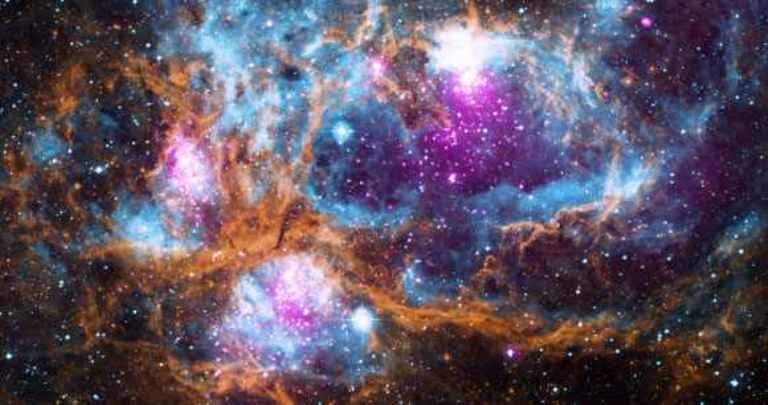
Also known as the Lobster Nebula and the War and Peace Nebula, NGC 6357 is a diffuse nebula.
It is located in the constellation Scorpius, approximately 5,500 light-years away.
NGC 6357 is actually a 'cluster of clusters,' containing at least three clusters of young stars, including many hot, massive, luminous stars.
Astronomers call NGC 6357 and other objects like it 'HII' regions.
An HII region is created when the radiation from hot, young stars strips away the electrons from neutral hydrogen atoms in the surrounding gas to form clouds of ionized hydrogen.
The X-rays from NASA's Chandra space telescope reveal hundreds of point sources, which are the young stars in NGC 6357, as well as diffuse X-ray emission from hot gas.
There are bubbles, or cavities, that have been created by radiation and material blowing away from the surfaces of massive stars, plus supernova explosions.
A recent paper on Chandra observations of NGC 6357 by Leisa Townsley et al. appeared in the Astrophysical Journal Supplement Series (arXiv.org preprint).
Leisa K. Townsley et al. 2014. The Massive Star-forming Regions Omnibus X-ray Catalog. ApJS 213, 1; doi: 10.1088/0067-0049/213/1/1



Reader Comments
to our Newsletter